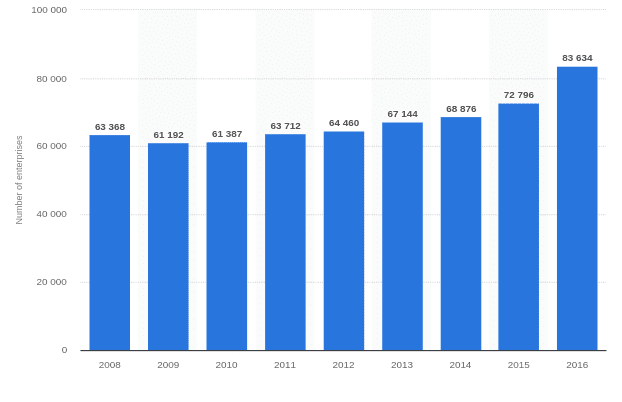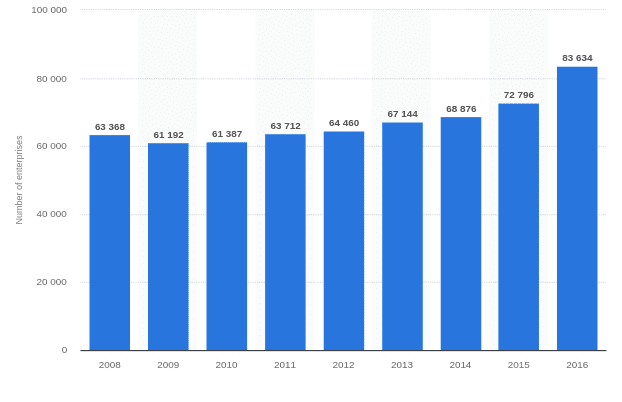INTRODUCTION
Entrepreneurship is one of the essential task and it is need to performed well as it is helpful in order to bring number of opportunities. The entrepreneurs are helpful in terms to cope up with rivalries in market (Chaston and SadlerSmith, 2012). The present report will focus over the activities as are differed source of entrepreneurial ideas with the help of which profitability of firm can be generated. In addition to this, assignment will focus over the entrepreneurial ideas as to determine the market gap for fast food ventures. In this way, this report will also discuss about the SWOT analysis of framework, market environments and evaluation of business activities.
LO 1
P1- Determination and evaluation of different sources of entrepreneurial ideas and innovation:
Sources of business ideas:
A business idea can come anywhere to name a few from personal skills, experience, mass media, surveys, hobbies, talents and many more.
Peter F Drucker's seven sources innovative opportunity:-
Peter Drucker is known as the inventor of modern management and has given us valuable resource on leadership, management, business, innovation and entrepreneurship (Audretsch, 2012). The following are seven sources of innovative opportunity by Drucker:
- The unexpected-
The business world is full of unexpected success and failures. Not only the failuers but also the unexpected success that comes to the organisation brings great source of inspiration and innovation.
- Incongruities-
Understanding what actually consumer wants and what it has or the difference between what is and what it is supposed to be can become a great source of inspiration of innovation.
- Industry and market structure changes-
The leaders are required to keep an eye on the change within the industry and to treat such changes not as threats but more like as opportunities.
- Change in the perception-
With the involvement of technology and power of social networks the perception of people about certain industry, brand or product changes overnight. This change in perception opens a road to innovation of development of new products and services.
- New knowledge-
Technological and scientific breakthroughs are the sources of innovation that businesses can not overlook. New knowledge can be applied in every aspects of company from learning to employment.
- Demographics-
A change in the demographics affects the company in one way or another. These changes affect the demand, buying habits and quantity of the product. The demographic change in age, education, employment affect the business ans open new doors of innovation.
- Process need-
The innovation is more task focusses rather than situation focused. The opportunity for innovation comes after looking into the process of the company and clearly identifying he weak points.
Role of entrepreneur:
Entrepreneur seeks a gap between the want and needs of the consumers and the product and services. They are optimistic and future oriented and they believe that success is possible and are willing to risk their resources for earning the profits. They are flexible and willing to move forward by adapting the changes and new information (Chaston and SadlerSmith, 2012). They grab every opportunities be it change in technology or any demo-graphical change or a change in the perception of the consumers. Convert such threat into a business opportunity.
Types of innovation:
Product innovation, process innovation, architectural innovation, radical innovation, incremental innovation, disruptive innovation, big bang and Schumacher's 5 source of innovation.
Difference between product and business idea-
A business idea revolves around a product for selling and making money while a product idea mean to develop and innovate a new product.
Exploring Creativity:
To identify and innovate an idea is not enough its understanding and practice is necessary. It can be done through by mind mapping, six thinking hats, lateral thinking and picture association.
LO 2
P2- Choice of specific entrepreneurial idea:
Here we are have decided to start a new business of accounting services. As with the implication of new financial and banking regulation the need for accounting and audit services is rising.
Identification of customer-
To identify the target market is of key importance as having a well defined target market is ore important than ever. Targeting a specific market does not mean that you are not including people who do not fit in to your criteria. Identifying and targeting allows you to focus your marketing money and brand message on a accounting and banking market. This is more effective, affordable and efficient (Chell, 2013).
With a clearly identified and target audience, it becomes much easier to determine that where and how to market your company.
GAP and Competitive analysis;
Here analysis is done by using the technique SWOT analysis:
Strength- the main strength of this business is that on a daily basis government issues notification and new financial and banking regulation are implemented.
Weaknesses- a lack in proper up to date knowledge and improper interpretation of rules and regulations.
Opportunities- issuance of new financial and banking regulation.
Threats- already present financial and accounting firms which will give a cut throat competition.
Interpretation and investigation of competitive market place-
Interpretation:
It can be done by interpreting following
Quality- the quality and the dedication shown by firm to its customers.
Identification- how much the firm is known in the market place and what position it holds.
Image- what is the image of the firm among the competitors weather it is positive or negative.
Issues- how the firm handles any bad scenario in the market place.
Investigation:
it can be done by following-
Know how- how much the manager is enabled to probe into critical area of ambiguity.
Experience- how much experience does the manager and other top level employees holds.
Competition- how the firm deals with the healthy and sometimes the unethical competition.
Customer segmentation:
Demographically:
This segmentation can be done on the basis of age, gender, income level, educational level, marital or family status, occupation and ethnic background.
Behavioral:
This segmentation can be done on the basis of personality, attitude, values, interests, hobbies, lifestyles and behavior.
Geographical:
This segmentation can be done on the basis of product based on seasons, size and type of region, food inclinations, launch product and service in new region (Dimov, 2011).
Understanding the business environment-
A business operates in a industrial environment which is both macro and micro.
Both the environment affect the firm simultaneously. T firm has to identify the major environmental factors that affects it can than it to prepare a strategy and plan to respond to such factors.
Porter's five force model:
Industrial rivalry:
The competition and the rivals the same industry makes it tough for a new firm's survival.
Threats of new entrance:
This always boost up the competition and makes it tough.
Threats of substitutes:
A similar product in market reduces the sales.
Power of suppliers:
Number of suppliers, availability and uniqueness of product with them, more the number of suppliers more it is easy to switch.
Bargaining power of buyer:
More the bargain less you earn.
LO 3
P3 Presentation of the data in order to support the gap analysis to evaluate specific entrepreneurial idea:
Gap analysis is required for every business to deciding the contrasts between the execution of the firm from current to genuine with a specific end goal to analysing execution of the firm. In data innovation, hole investigation reports are regularly used by venture director and process change of business. In the event of beginning another cheap food outlet in London city, it is expected to investigation of legitimate market by which hole examination approach, so I will have the capacity to think going to progression extent of my new business thoughts in showcase which can get potential effect of productivity of business. Keeping in mind the end goal to change in execution of the business, I have to utilization of McKinsey way to deal with survey the execution of the business and furthermore discover the extent of the cheap food benefits in London city (Gartner, Carter and Reynolds, 2010). It is partitioned into two variables which is hard and delicate. Keeping in mind the end goal to investigation of significant information of the firm, I have to development of proper procedure for arranging if contrived to keep up and manufacture upper hand over the contenders. It infers that, how it will have the capacity to achieve to accomplish goals of the business in industry.
In setting of adequate running of cheap food administrations, business system can improvement of arranging of the business by which I can manage aggressive weight of nourishment administrations advertise. The structure of technique can help me to recognize the group which is isolated into them. It has been seen that, there are quantities of issues that can be utilized as a part of such a way where something new exercises that can be utilized as a part of such a way where something. What is the chain of command of my business structure may urge me to arrangement of important thoughts by which I could make change inside structure of the organization. Our different division of the food business must be composed at working environment all together to completion of each undertaking in viable way. Aside from the framework approach of methodology characterizes that, how I can control and screen of execution of different arranging of business exercises (Gonzalez-Alvarez and Solis-Rodriguez, 2011). I have to enlist fitting staffs for finish of different business functionalities inside outlet. For different posts of the business, fundamental abilities are should have been have by every worker in regard with performing admirably at work environment. As indicated by information examination of market of London, I have to set up legitimate posting of our staffs and ensuring that, they have important experience or aptitudes which push them to culmination of different errands of the business exercises in adequate frame.
P4 Interpretation of the data in terms to provide the evidence of market potential:
From the analysis, it has seen that various quantities of quick sustenance administrations are running in London city and before colleges also. So it created troubles for my cheap food outlets in market to contend rivals in industry. Maintaining a drive-thru food business and keep up its principles is difficult occupation for its proprietor. As business visionary wander of cheap food administrations, quantities of issues or hindrances are being looked by me all together t working outlet in advertise. From the information examination of UK, from 2008 to 2016. After a decrease in 2009, the quantities of eatery and drive-thru food in the country has been consistently expanding (Hansen, Shrader and Monllor, 2011). The business experts need to inspected that, in UK accommodation industry, various quantities of cheap food business are running adequately and producing huge measure of income by serving one of a kind and various types of sustenance administrations. In London city, extensive variety of requests are expanding regarding having one of a kind support of sustenance from my outlet. The vast majority of the understudies would be customer of my sustenance items, it is normal that, creation and development in junk food items which create more enthusiasm inside our items and administrations which has potential for expanding piece of the pie of my business. People groups of the city is requesting more exceptional items and inventive things in quick sustenance outlets which is boosting up their inclinations towards use of various types of flavour nourishments. In London city, the vast majority of understudy is requesting for eating for Pizza, Burger, snacks, Sandwich and so forth so every one of these items must be included into menu rundown of my outlet which cover more customer base of my focused on groups of onlookers (Kobia and Sikalieh, 2010).

The greater part people groups of the city is requesting for having cheap food dinners at their junk food outlets which can serve them at speedier rate. Next to from it, from the investigation, it was recognized that, in London city, the vast majority of our focused on gatherings of people would be adolescent male and female understudies which will be under 25 to 28 years. So these divided target customer base will be relied upon to be increased wanted reaction from these age gatherings. Aside from it, over 35 years people groups are leaning toward for eating non-veg nourishments which can be made in outlet at faster rate. Assortment of alternatives are introduced here which can be used inside outlet to boosting up customer base of the business.

LO 4
P5 SWOT framework to support objective framework:
SWOT is basically a technique to analyse strength, weaknesses, opportunities and threats for any organisation. By conducting SWOT analysis business planning becomes easier and management can achieve goals examining external and internal factors.
Objective of SWOT analysis should be decided:
This analysis is done if there is launching of any new product or service or any kind of change in management system (Blockeel, et al., 2016). Therefore, mind should be set to start this analysis and objective or goal should be there at initial stage.
Research business, market and industry:
Research work should be completed in the targeted market and understood by the leaders before starting this analysis. It helps in understanding of business position and market trends and other perspectives regarding business partners, competitors and staff members.
Listing Business strengths:
First stage is to list business strengths which includes financial resources, cost advantages, and competitive structure of the firm. It is not necessary that list has to be definitive. All types of thoughts and ideas are welcomed and encouraged.
Listing business weaknesses:
At this stage weaknesses are considered which can be absenteeism of staff members, poor coordination among them, absence f new and innovative products or clients, lack of intellectual property, decrement of market share. These disadvantages show the rate of business growth in few years. While some business weaknesses are resolved in past few years.
Opportunities should be listed:
These include external opportunities of any organisation. Any opportunity of a firm can become threat of another (Hartmann and Vachon, 2018). If the business is launching a new product in market then it should firstly make research that the particular product is already in the market or not. Else launching would definitely fail further. Opportunities also include partnerships, technological aspects, diversified marketplace.
Potential threats of business
Threats include unemployment in communities, increasing competition, uncertainty of global market and change in government policies. These all have adverse effect on functioning of business. Various operating departments are badly affected from these external threats. So any organisation has to be prepared for future threats and should avail opportunities on period. Finally a review is done and strategy is followed regarding SWOT analysis.
P6 Competitive and market environment in which idea can be launched:
In today's era environment is nearly competitive for every organisation. There is competition from local firm to national and international firms. With the emergence of new and innovative products competition is increasing enormously. By applying Porter's five forces it can be easily understood and verified. An environment can be competitive or complex among industries which results in generating profits and sales. Strategic decisions are made by company to analyse new entrants for any reason and that area can be under served on the basis of profit margin. Company gains advantage from patent process which is permanent (Jaber, et al., 2015). In industrialized economy there can be number of buyers and few suppliers which make market supplier dominant and large share of profit goes under them. But reverse happens when many suppliers are present and only few buyers are there due to which control transfers to supplier. While market environment is controlled by political, economic, competitive, technological, consumer behaviour and social environment. Competitive environment is one of the part of market. Various external factors of market affect operations of business. Micro, internal and macro are major levels of environment. Community forces affect small forces but internal environment are influenced and controlled by external environment. Macro environment consists of green technology, inflation rates, population change, media sources, recession period while micro environment includes customers, suppliers, trade unions, distributors, banks. All capital assets, organizational firms, its policies and activities are considered as internal forces. Organisation is aware these forces and can control them in the future (Keller, 2016). Social and political, demographic, legal aspects are considered in macro environment. They affect various market segments like cultural norms and values, country age, ethnic lifestyle. Any product or production procedure which is harmful to community should be avoided.
CONCLUSION:
Finally, it is concluded that to determine opportunities and threats SWOT analysis should be conducted and data is presented to analyse market potential and evaluation has been done to provide entrepreneurial information. Any organisation should confirm its external and internal forces so that future consequences are clear to it. Competitive market is increasing which is prime factor of market environment and affects business to much extent. Research should be done by organisation before coming in the competitive world as many new arrivals are there whether it is small scale or large scale industries.
Visit essay help page for taking help of professional essay writers.
REFERENCES:
Book & Journal
- Audretsch, D., 2012. Entrepreneurship research. Management Decision, 50(5), pp.755-764.
- Blockeel, et al., 2016. A fresh look at the freeze-all protocol: a SWOT analysis. Human reproduction, 31(3), pp.491-497.
- Chaston, I. and SadlerSmith, E., 2012. Entrepreneurial cognition, entrepreneurial orientation and firm capability in the creative industries. British Journal of Management, 23(3), pp.415-432.
- Gartner, W.B., Carter, N.M. and Reynolds, P.D., 2010. Entrepreneurial behavior: Firm organizing processes. In Handbook of entrepreneurship research (pp. 99-127). Springer, New York, NY.
- Gonzalez-Alvarez, N. and Solis-Rodriguez, V., 2011. Discovery of entrepreneurial opportunities: a gender perspective. Industrial Management & Data Systems, 111(5), pp.755-775.
- Hansen, D.J., Shrader, R. and Monllor, J., 2011. Defragmenting definitions of entrepreneurial opportunity. Journal of Small Business Management, 49(2), pp.283-304.
- Kobia, M. and Sikalieh, D., 2010. Towards a search for the meaning of entrepreneurship. Journal of European industrial training, 34(2), pp.110-127.
- Bolton, W. and Thompson, J., 2013. Entrepreneurs: Talent, temperament and opportunity. Routledge.
- Chell, E., 2013. Review of skill and the entrepreneurial process. International Journal of Entrepreneurial Behavior & Research, 19(1), pp.6-31.
- Dimov, D., 2011. Grappling with the unbearable elusiveness of entrepreneurial opportunities. Entrepreneurship Theory and Practice, 35(1), pp.57-81.
- Mitchelmore, S. and Rowley, J., 2010. Entrepreneurial competencies: a literature review and development agenda. International journal of entrepreneurial Behavior & Research, 16(2), pp.92-111.
- Hartmann, J. and Vachon, S., 2018. Linking environmental management to environmental performance: The interactive role of industry context. Business Strategy and the Environment. 27(3). pp.359-374.
- Jaber, et al., 2015. Employment of renewable energy in Jordan: Current status, SWOT and problem analysis. Renewable and Sustainable Energy Reviews. 49. pp.490-499.
- Keller, K.L., 2016. Reflections on customer-based brand equity: perspectives, progress, and priorities. AMS review. 6(1-2). pp.1-16














